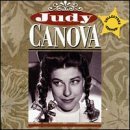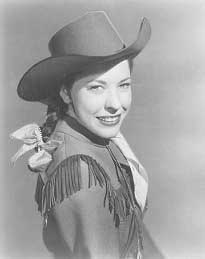 |
|
Last modified Sat., January 13, 2007 - 01:29 AM Originally created Saturday, January 13, 2007 FROM OUR PAST: Canova family had show-business ties By Leni Bessette and Louise Stanton Warren, FROM OUR PAST Immigrants from Spain, Portugal and Minorca arrived early into St. Augustine, the Canova family among them. Canovas began to populate the state like the little gold balls in orange groves. One Canova family spawned at least two well-known members with Jacksonville connections. In 1865, George Paul Canova, from St. Augustine, married Diannah Greene, a daughter of prominent Sanderson pioneers. It is said George's father, Bartolo, moved the family to Sanderson, bought thousands of acres, established a mercantile store and deeded everything to his son, George Paul, and returned to Jacksonville to captain a steamboat. It is also said that George Paul started married life with $10 and working in his father's store. Nonetheless, he and Diannah were rich, owning thousands of acres of orange groves, pine tree plantations, a hotel, a cotton gin, a store and a thousand head of cattle. The Canovas erected a large home for their nine boys and three girls, who were educated in Jacksonville to be accomplished musicians and for some time lived on Monroe Street. Several of the children settled in the city. 
Old Canova home in Baker County. Courtesy Florida Photographic Collection. Although Canova was reared Catholic and Diannah Canova Baptist, Canova was close friends with his brother-in-law, Thaddeus Hill. So when Hill converted to the Church of Jesus Christ of Latter-day Saints (the Mormon Church), it is believed he also converted the Canovas. In 1897, George, Diannah and most of their children were baptized Mormons six weeks after the Hills. By January 1898, Canova was an elder of the church. That June, a self-styled Committee of Eight sent a threatening letter to Mormon missionaries in Sanderson, as well as to the man who had been feeding and housing them, George Canova. It was apparently feared that Baker County women would be stolen for Utah polygamists. One night as Canova and Hill were returning by wagon from a church conference, Hill jumped off to open a gate, and Canova, still holding the horses' reins, was shot six times, then viciously axed in the head. Hill, unable to help his friend, dashed through the bushes to a nearby creek. The band of killers followed, shooting, but Hill escaped through the swamp. Diannah Canova remained in Baker County awhile, although she continued to be harassed by some, then moved her family to Jacksonville, dying in 1906. George Canova is hailed as a martyr. The musical genetics in the Canovas passed to their grandchildren and notably to Judy Canova, the yodeling hillbilly, famous on stage, screen and radio in the 1930s, '40s and '50s. Juliette Canova, born in Jacksonville in 1916, took Judy as her stage name.  
Album Cover - Popular Commedienne and singer, Judy Canova A popular, musical comedienne who maintained her country persona throughout her performing life, she was sometimes overlooked by critics and big city audiences. Nonetheless, her radio show rated in the top 10 nationwide. Judy Canova studied music in Jacksonville, as had the Canova children before her. Her professional career began as a child, with her brother and sister playing and singing as the Three Georgia Crackers or the Canova Cracker Trio on Jacksonville radio. Canova preferred to be a concert singer, as was her mother, but decided to rely on the most valuable musical assets she possessed: her volume and her yodeling. From Jacksonville radio, the Crackers moved to New York City Night Clubs and vaudeville. Some say popular singer of the day Rudy Vallee heard their act and invited her to appear on radio with him. Judy maintained her cornpone, dumb-as-a-fox character, dressed in bobby sox, outsized ankle boots, checkered blouse and straw hat. The pigtails she sported through adulthood became a popular college fashion for young women. While Canova made several notable appearances in feature films, her real popularity lay in a series of comedies in which she starred as the man-chasing, under-appreciated but audience-favorite country bumpkin. Radio was her greatest success, as she performed with Charlie McCarthy and Edgar Bergen and on the Chase and Sanborn Hour. She also cut a number of records. The Canova career was rounded out by 12 years of The Judy Canova Radio Show, consisting of jokes, songs and corny characters until 1953, when it passed with the demise of old-time radio. She made many guest appearances on television and took small film roles until her death from cancer in 1983. One of the first women to negotiate a share of her films' profits and special rights for her production company, Canova was anything but dumb. She was honored with two stars on the Hollywood Walk of Fame for radio and for movies. Her daughter, an actress, was named Dianna for Canova's Baker County grandmother. Jacksonville attorney Louise Stanton Warren and retired teacher Leni Bessette investigate the stories behind the headstones in the city's oldest cemeteries. Warren, mostly the writer, and Bessette, mostly the researcher, developed their interest while creating the Port of Jacksonville Pilot Club's annual cemetery tours. For more information, contact Warren at Louesq@bellsouth.net, or c/o Heather Lovejoy, Community News, The Florida Times-Union, P.O. Box 1949, Jacksonville, FL 32231, fax 359-4478. Article found online at the Florida Times-Union, Jacksonville, Florida: http://www.jacksonville.com/tu-online/ 
|